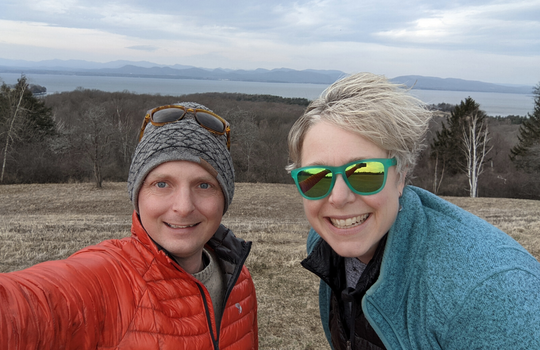Article
How UVMHN Transformed Care With a Systemwide EHR Integration
When the University of Vermont Health Network (UVMHN) set out to unify six independent hospitals with a single electronic health record (EHR), the project ended up spanning a decade. And while the effort centered around technology, it required more than technical expertise. Navigating the complex, multi-phase endeavor required flexibility, ingenuity, and unwavering commitment to a core mission: expanding access to quality healthcare for residents of the largely rural Champlain Valley between Vermont and Northern New York.
This Article Covers
At the outset of the project in 2012, each affiliated hospital operated its own EHR. This created barriers to scheduling appointments, referring patients, or syncing business operations. But before extending Epic across the entire health system, UVMHN needed approval from its board of directors along with the Green Mountain Care Board, an independent group appointed by Vermont’s governor. Tegria Managing Director Matt Abrams worked to secure approval on multiple fronts, testifying in a public hearing, leading five rounds of public responses to questions, and writing an affidavit to certify the total cost of ownership for the health system’s CEO.
Navigating unforeseen challenges
After years of review, planning, and approval, the project’s first wave began in 2018 with an initial go-live in November 2019. By early 2020, teams were preparing for a second rollout when the COVID-19 pandemic struck. Overnight, work that had been mostly onsite transitioned to Microsoft Teams and SharePoint.
The team quickly settled into a new routine, and momentum built as they pressed on toward the next rollout. Then on October 28, 2020, a cyberattack crippled the UVMHN infrastructure. Although the EHR wasn’t compromised and patient information was safe, the Epic EHR was temporarily inaccessible.
“Our analogy was that the town was flooded and the roads were destroyed. The buildings were still there, we just couldn’t get to them,” said UVMHN Epic Director Kristy Brown. “We couldn’t use Epic for 21 days and project work was halted.”
Without a working EHR, clinicians used paper charts to log handwritten notes for weeks. In the meantime, Tegria teams worked alongside UVMHN staff to restore operations as quickly as possible. “That was a very challenging period of time for everyone in our organization; our patients, and staff, and our health network,” said UVMHN Associate Chief Medical Information Officer Justin Stinnett-Donnelly, MD. “Tegria’s stance was ‘tell us what we can do to get you back online.’”

Moving forward together
Over the next few months, Tegria teams juggled the recovery effort and project work, sorting out regulatory differences between Vermont and New York that affected business operations. “We had to figure out how to do business with an academic medical center, community hospitals, and critical access hospitals in two states,” said Tegria Principal Michael Caldwell, the project’s RCM Manager. “There are regional differences that you can’t standardize.”
The project’s final stretch included at-the-elbow training for physicians and a unique demo environment for clinicians and staff. From workflow design to training, involving physician leaders in the project was critical to success, said Tegria Principal Consultant Layna Chuter, the project’s Implementation Director. “Clinicians were highly involved. We had physician champions and incorporated hundreds of clinical staff.”
We’ve seen a dramatic reduction in the amount of paper travelling back and forth. It’s improved the safety of sending patients to specialists and other facilities within the system.
— JUSTIN STINNETT-DONNELLY, MDUVMHN Associate Chief Medical Information Officer
Creating a network
By early 2022, the UVMHN’s EHR platform stretched across the Champlain Valley. Despite incredible setbacks, the project met its objectives of improving care delivery and streamlining business operations. “We’ve seen a dramatic reduction in the amount of paper travelling back and forth,” said Stinnett-Donnelly, a hospitalist at Central Vermont Medical Center. “It’s improved the safety of sending patients to specialists and other facilities within the system.”
Achieving transformation at this scale doesn’t happen by accident; project leaders credit UVMHN’s learning culture and can-do attitude along with Tegria’s dedicated partnership. “You know, it’s all about the people,” said Stinnett-Donnelly. “When you get down to it the leadership at Tegria wanted to make sure we were successful. They viewed it as a partnership, and they would do whatever needed to be done.”